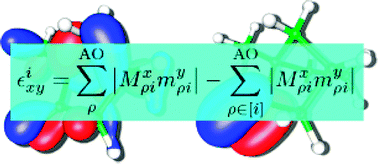Local correlation domains for coupled cluster theory: optical rotation and magnetic-field perturbations
Abstract
An approach is described for selecting local-correlation orbital domains appropriate for computing response properties such as optical rotation using frequency-dependent coupled-cluster linear-response theory. This scheme is an extension of our earlier idea [N. J. Russ and T. D. Crawford, Chem. Phys. Lett., 2004, 400, 104] based on an atom-by-atom decomposition of the coupled-perturbed Hartree–Fock (CPHF) response of the component molecular orbitals to external electric and magnetic fields. We have applied this domain-selection scheme to a series of chiral molecules, including pseudo-linear structures (hydrogen molecule helices,

- This article is part of the themed collection: Explicit-r12 correlation methods and local correlation methods

 Please wait while we load your content...
Please wait while we load your content...